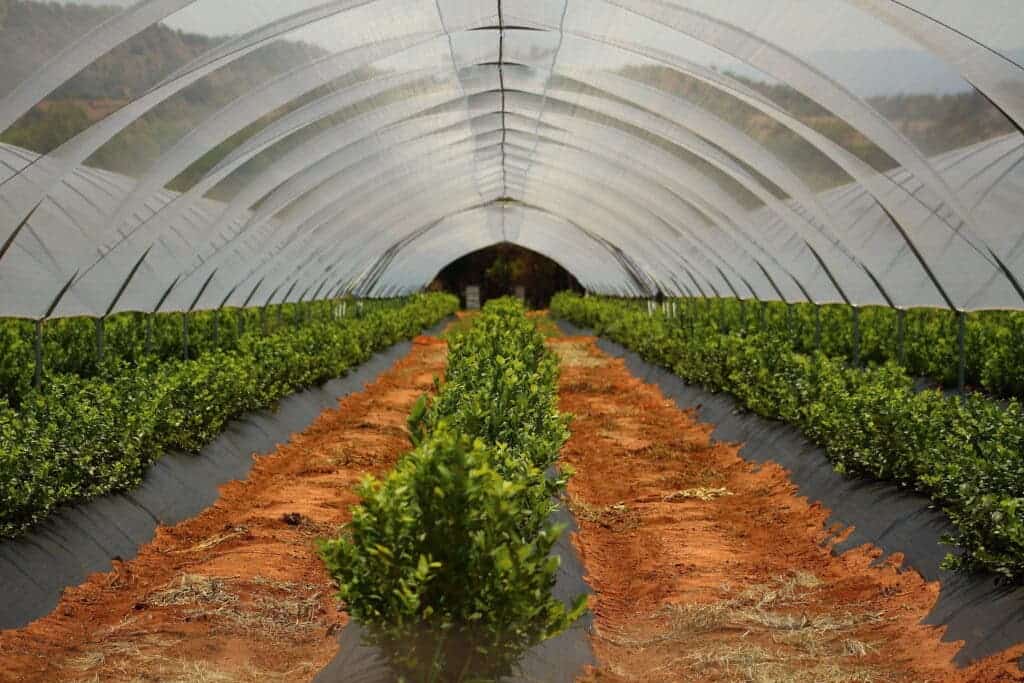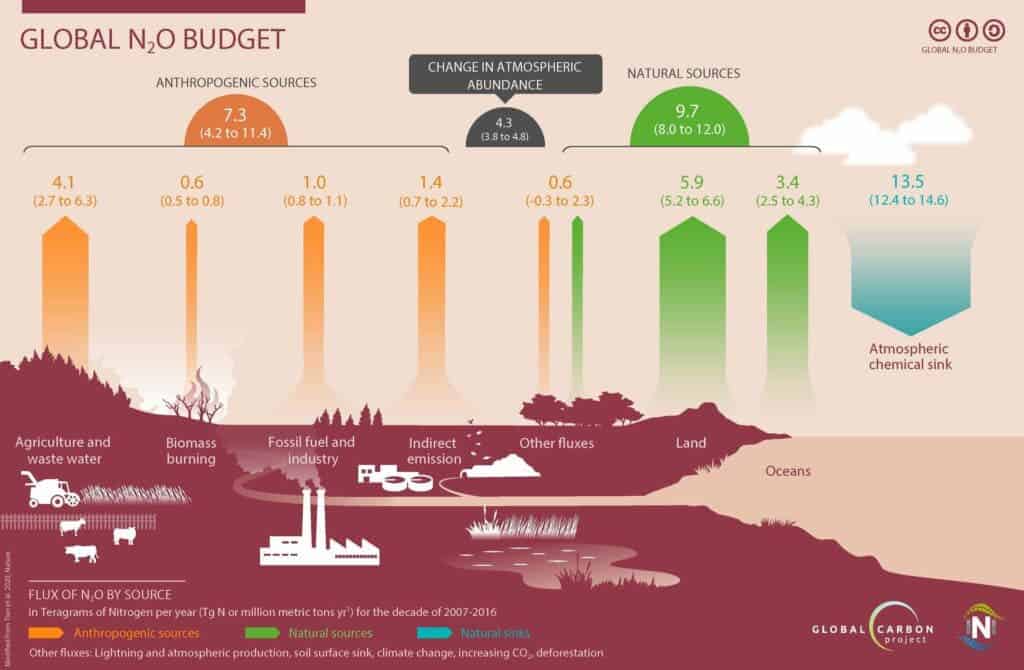The expansion of intensive farming is jeopardizing the goals of the Paris Agreement, according to a new study. Researchers warned that the greater use of artificial fertilizers and larger populations of livestock is increasing the concentration of atmospheric nitrous oxide (N2O), a key greenhouse gas.

N2O is released to the atmosphere from artificial and organic fertilizers such as manure. It is 300 times more potent than carbon dioxide (CO2). The levels of N2O in the atmosphere are currently 20% higher than in pre-industrial times, with most of that increase coming from farming.
Artificial fertilizers account for two-thirds of the emissions of N2O from farming. The gas is released when microbes in the soil break down the excess fertilizer, particularly in over-wet ground where there is less oxygen. Farmers can reduce emissions with simple methods such as using fertilizer only when it’s actually needed.
Researchers from 48 research institutions in 14 countries created the most comprehensive assessment to date of all global sources and sinks of N2O. The findings showed N2O emissions are growing at a rate of 1.4% a year, faster than the forecasts of the Intergovernmental Panel on Climate Change (IPCC). This means the world’s temperature is on track to exceed the 2ºC warming limit included in the Paris Agreement on climate change, the authors agreed. In fact, they found that the current rates of nitrous oxide emissions are consistent with 3ºC of global warming above pre-industrial levels.
“The dominant driver of the increase in atmospheric nitrous oxide comes from agriculture, and the growing demand for food and feed for animals will further increase global nitrous oxide emissions,” said Hanqin Tian, co-author. “There is a conflict between the way we are feeding people and stabilizing the climate.”
The study found that the largest contributors to global N2O emissions are East Asia, South Asia, Africa, and South America. Emissions from synthetic fertilizers dominate releases in China, India, and the US, while emissions from the application of livestock manure as fertilizer dominate releases in Africa and South America.

Emerging economies, particularly Brazil, China, and India, where crop production and livestock numbers have increased, saw the largest increases in N2O emissiosn. Meanwhile, those in Europe dropped in agriculture and the chemical industry. This was achieved thanks to the more efficient use of fertilizers.
Study co-leader Dr. Josep Canadell said: “This new analysis calls for a full-scale rethink in the ways we use and abuse nitrogen fertilizers globally and urges us to adopt more sustainable practices in the way we produce food, including the reduction of food waste. The findings underscore the urgency and opportunities to mitigate nitrous oxide emissions worldwide to avoid the worst of climate impacts.”
The study was published in the journal Nature.






